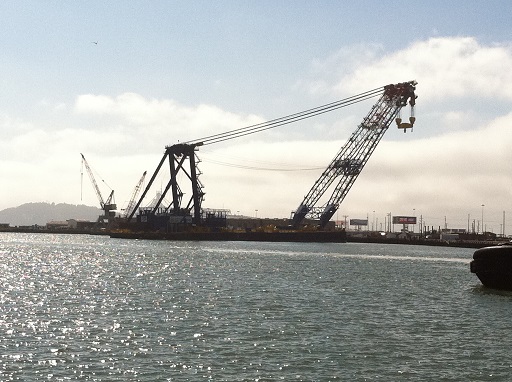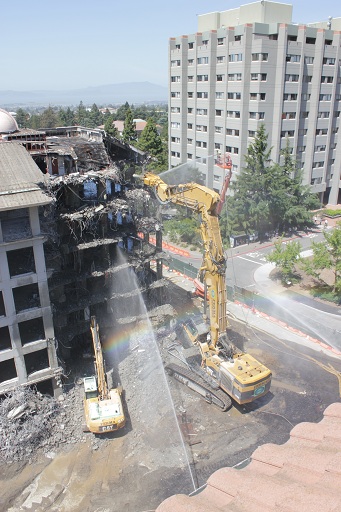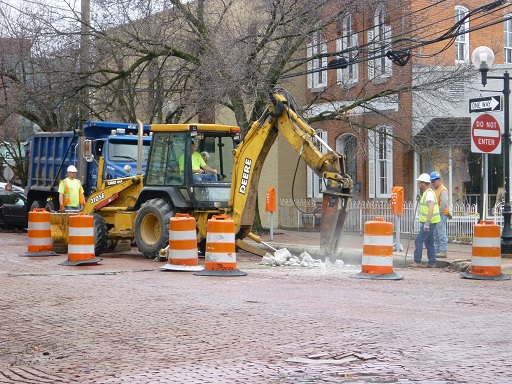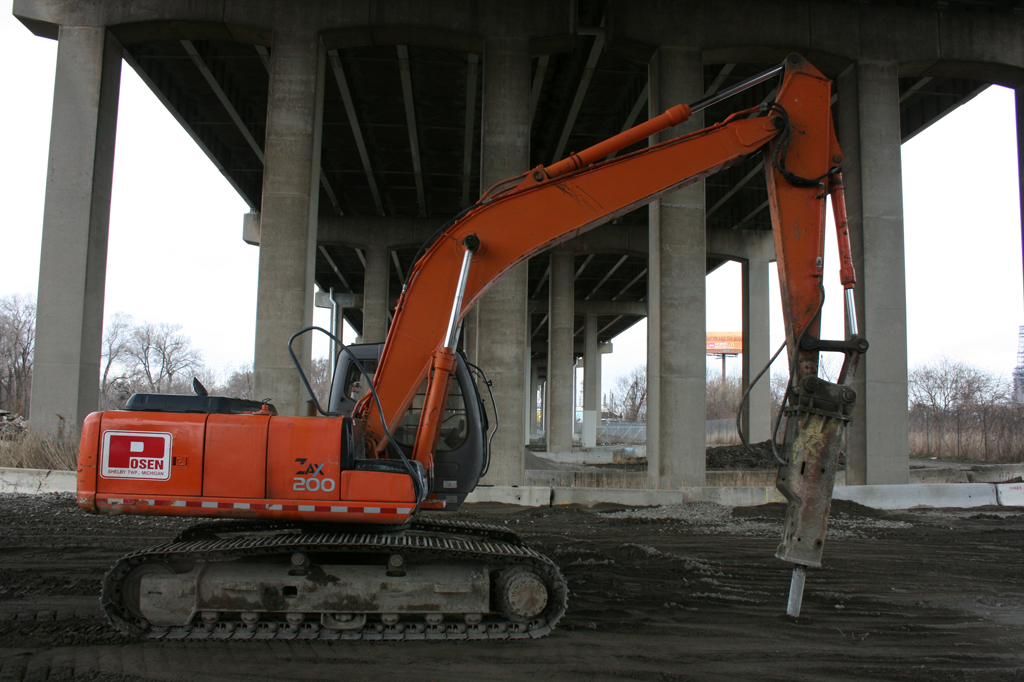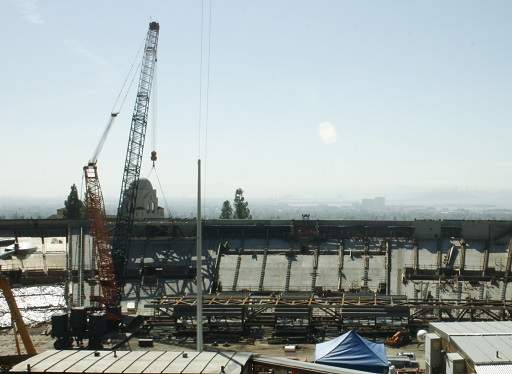
Photo Credit: Alex Mead
Seen here on the left hand side of the picture above is a heavy lift crane hoisting large steel frames from the position on the ground where they were assembled onto the top lip of California Stadium in Berkeley, California. These steel frames eventually became the luxury and press boxes of the renovated stadium. Using heavy lift cranes comes at a high cost due to several reasons, one being that the crane must be trucked to the site in many pieces and assembled specifically for the lift. Often the assembly alone requires several smaller cranes in itself. As such, designers and construction workers try to make structures that can be built without the use of this type of specialized equipment. The tradeoff here making it worth the use, however, was that steel workers were able to build the frames on the ground leading to benefits that outweighed the cost and hassle of using a heavy lift crane.
